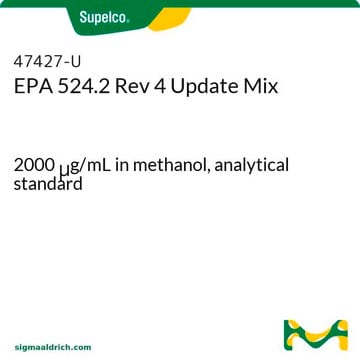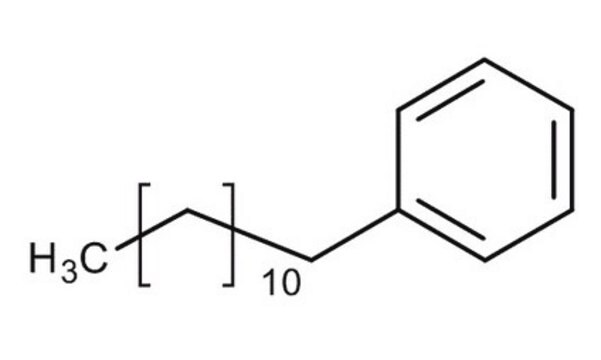47794
1,2,3-Trichloropropane
analytical standard
Sinónimos:
Glycerol trichlorohydrin, Trichlorohydrin
About This Item
Productos recomendados
grado
analytical standard
CofA
current certificate can be downloaded
envase
ampule of 1000 mg
técnicas
HPLC: suitable
gas chromatography (GC): suitable
índice de refracción
n20/D 1.484 (lit.)
bp
156 °C (lit.)
mp
−14 °C (lit.)
densidad
1.387 g/mL at 25 °C (lit.)
aplicaciones
cleaning products
cosmetics
environmental
food and beverages
personal care
Formato
neat
temp. de almacenamiento
2-30°C
cadena SMILES
ClCC(Cl)CCl
InChI
1S/C3H5Cl3/c4-1-3(6)2-5/h3H,1-2H2
Clave InChI
CFXQEHVMCRXUSD-UHFFFAOYSA-N
¿Está buscando productos similares? Visita Guía de comparación de productos
Aplicación
Palabra de señalización
Danger
Frases de peligro
Clasificaciones de peligro
Acute Tox. 3 Dermal - Acute Tox. 3 Inhalation - Acute Tox. 3 Oral - Aquatic Chronic 3 - Carc. 1B - Eye Irrit. 2 - Muta. 2 - Repr. 1B - STOT RE 1 Inhalation
Órganos de actuación
Kidney,Liver,Mucous membranes
Código de clase de almacenamiento
6.1C - Combustible acute toxic Cat.3 / toxic compounds or compounds which causing chronic effects
Clase de riesgo para el agua (WGK)
WGK 3
Punto de inflamabilidad (°F)
165.2 °F - DIN 51758
Punto de inflamabilidad (°C)
74 °C - DIN 51758
Equipo de protección personal
Eyeshields, Faceshields, Gloves, type ABEK (EN14387) respirator filter
Elija entre una de las versiones más recientes:
¿Ya tiene este producto?
Encuentre la documentación para los productos que ha comprado recientemente en la Biblioteca de documentos.
Los clientes también vieron
Nuestro equipo de científicos tiene experiencia en todas las áreas de investigación: Ciencias de la vida, Ciencia de los materiales, Síntesis química, Cromatografía, Analítica y muchas otras.
Póngase en contacto con el Servicio técnico
















